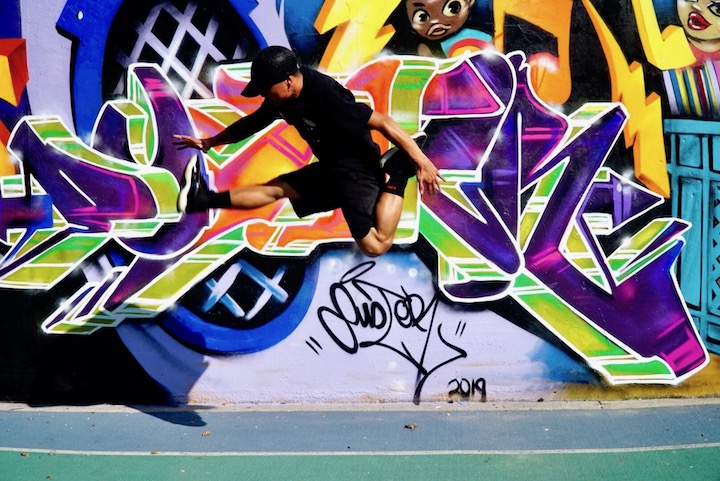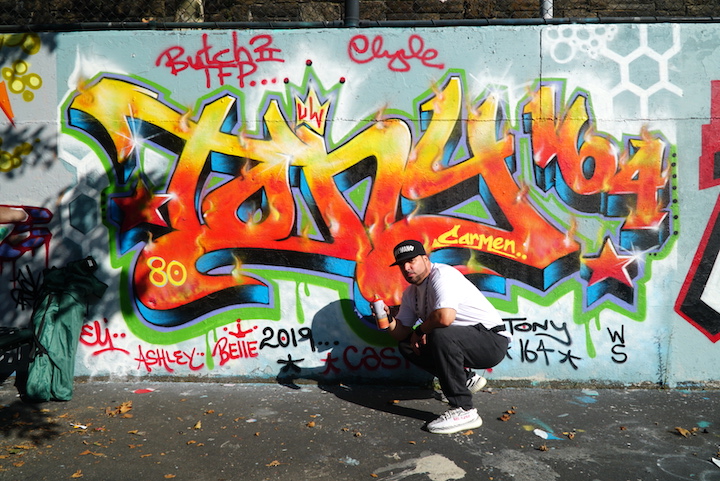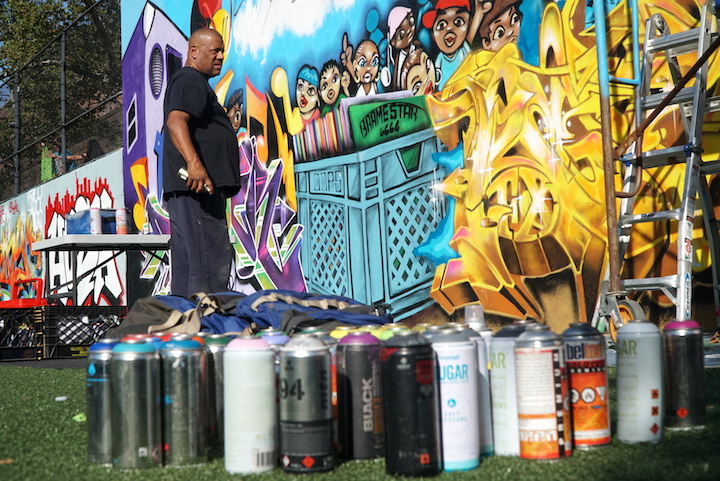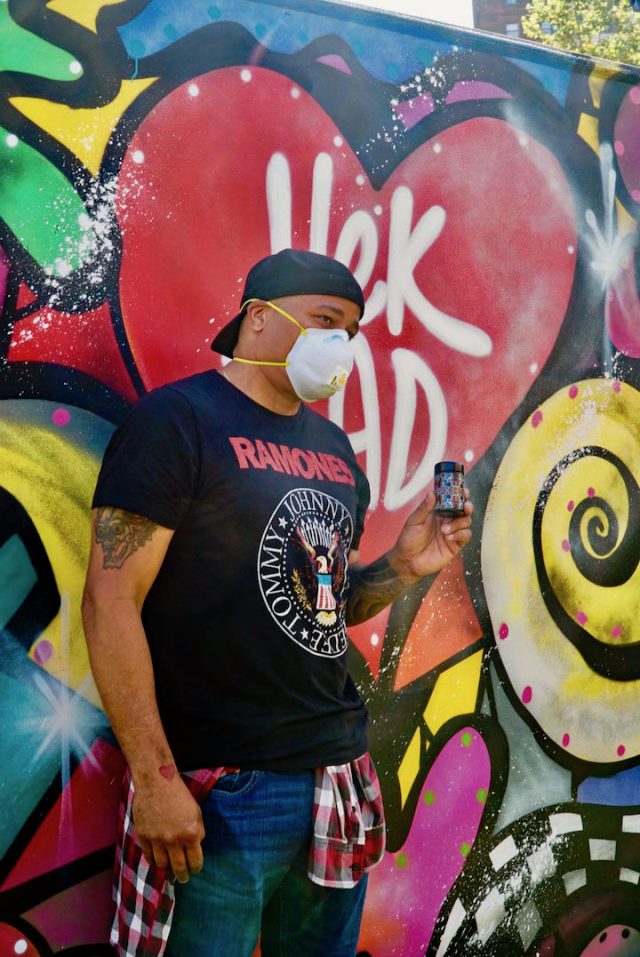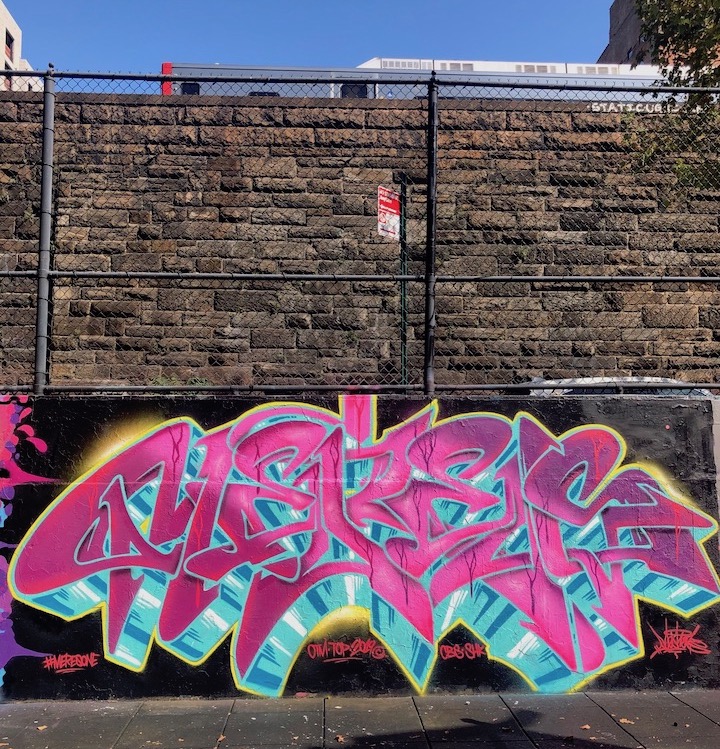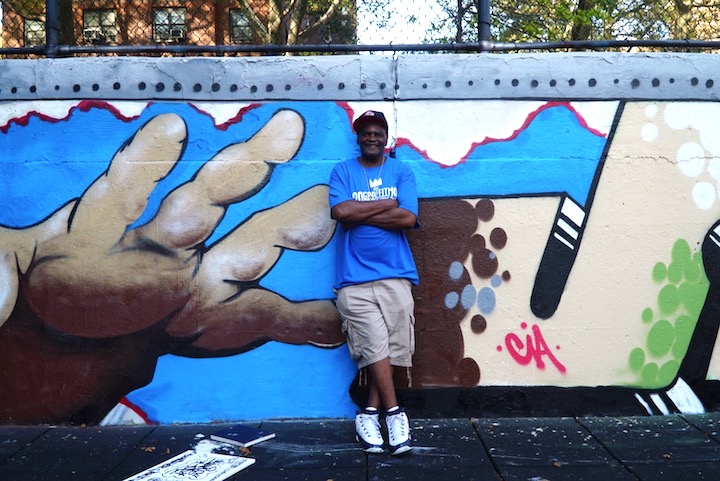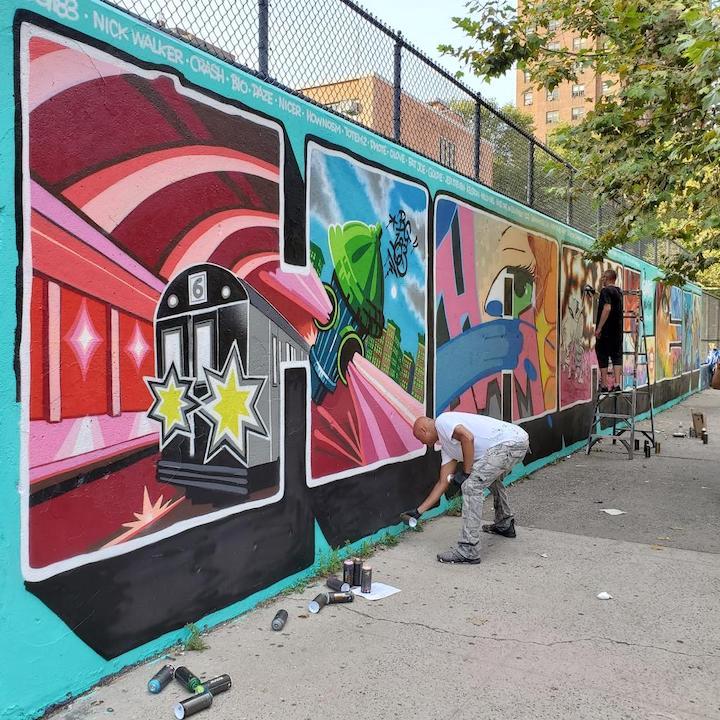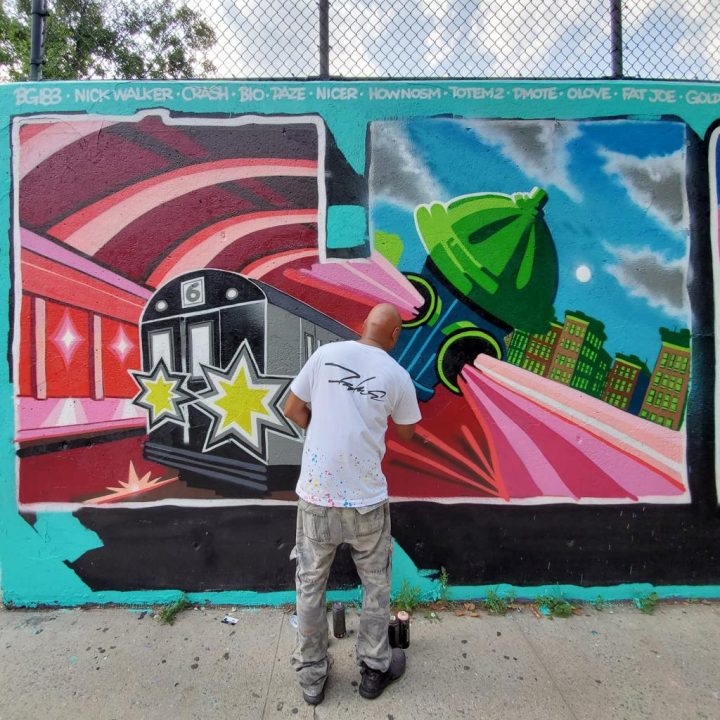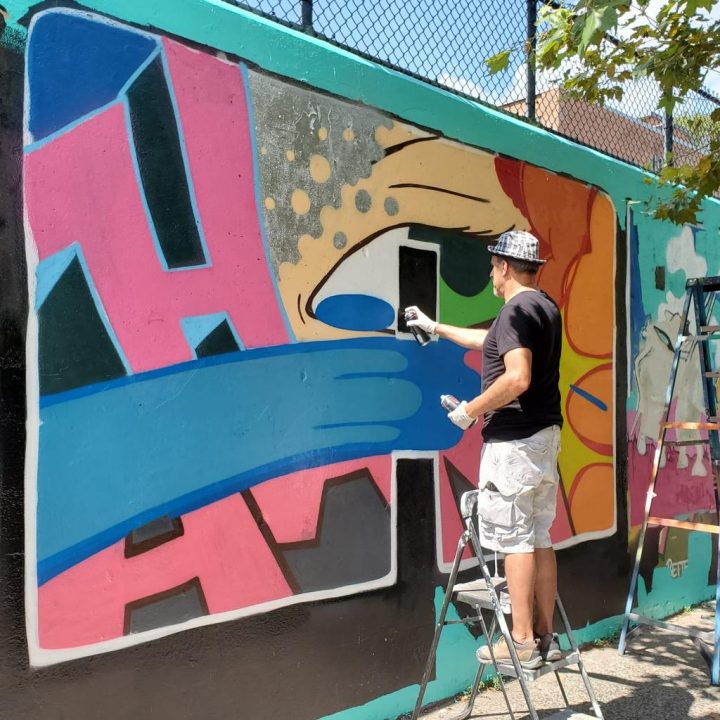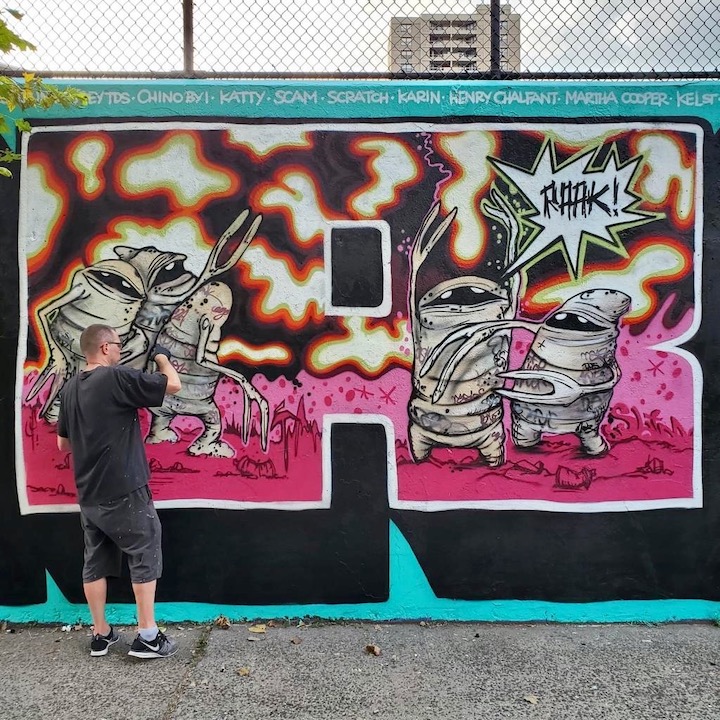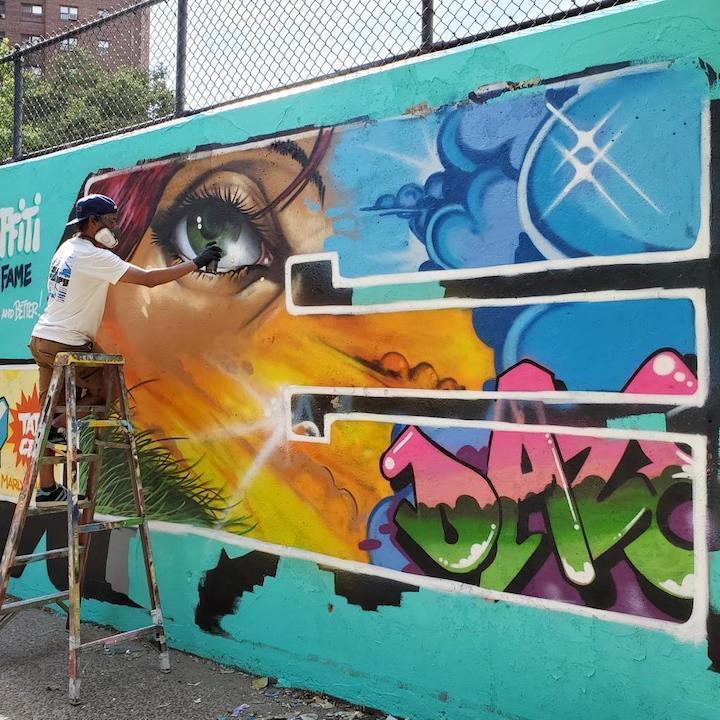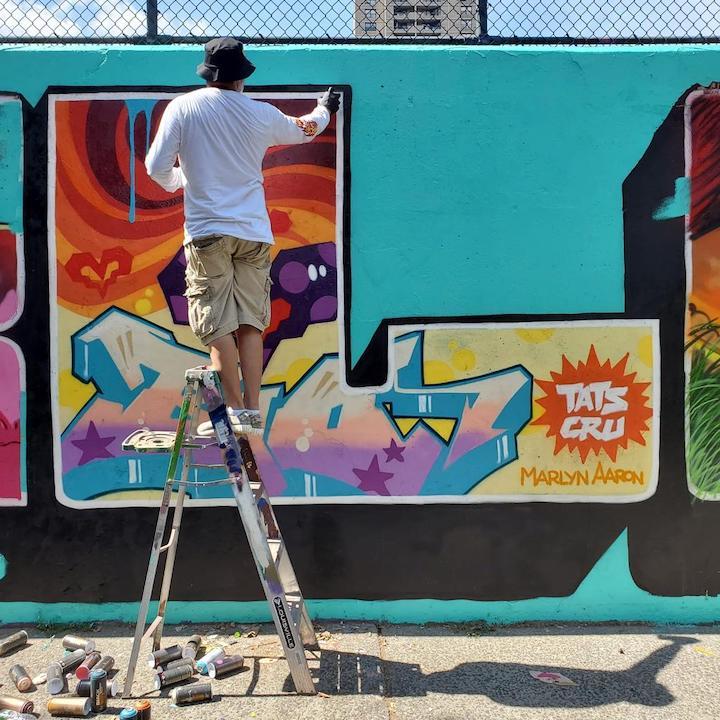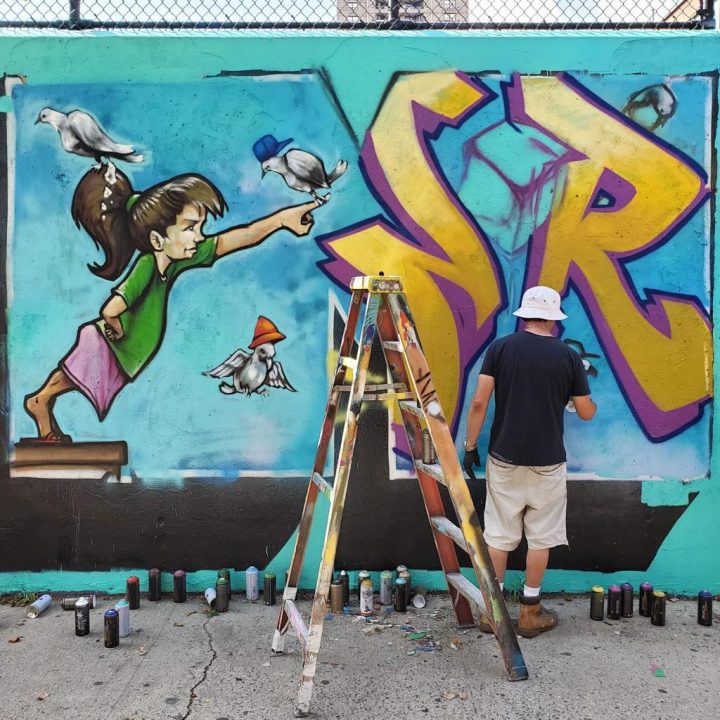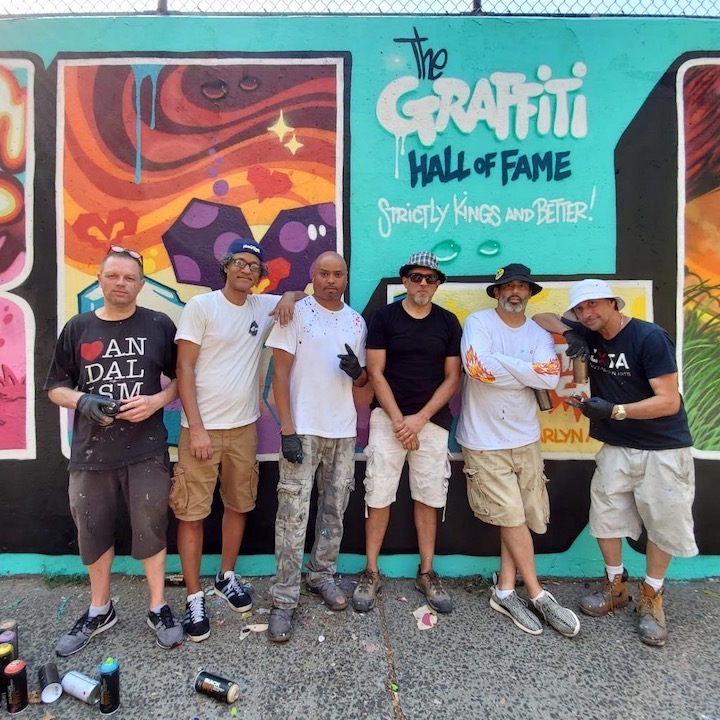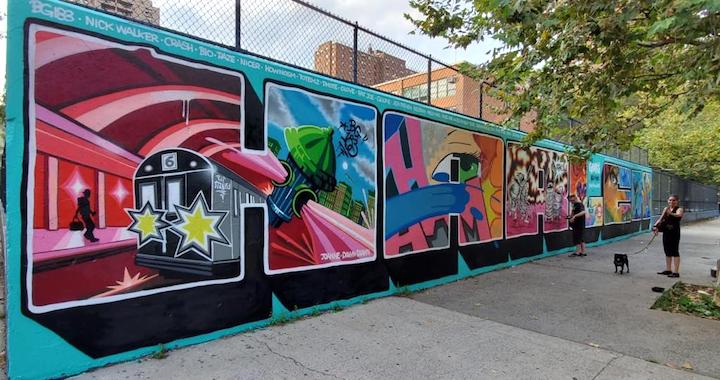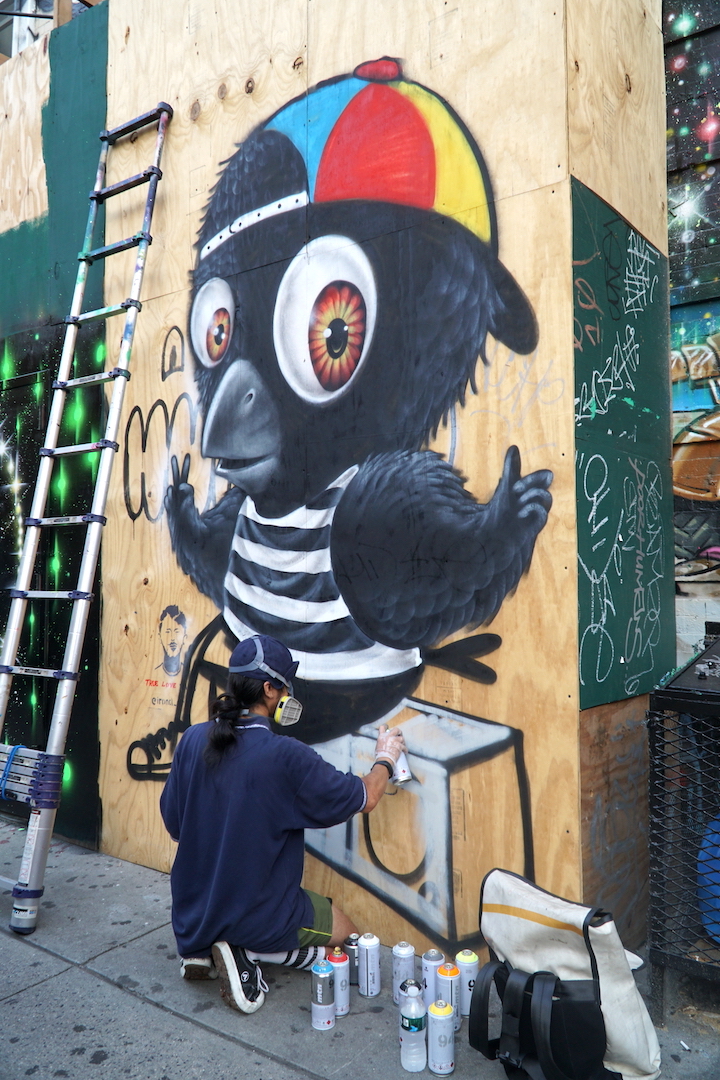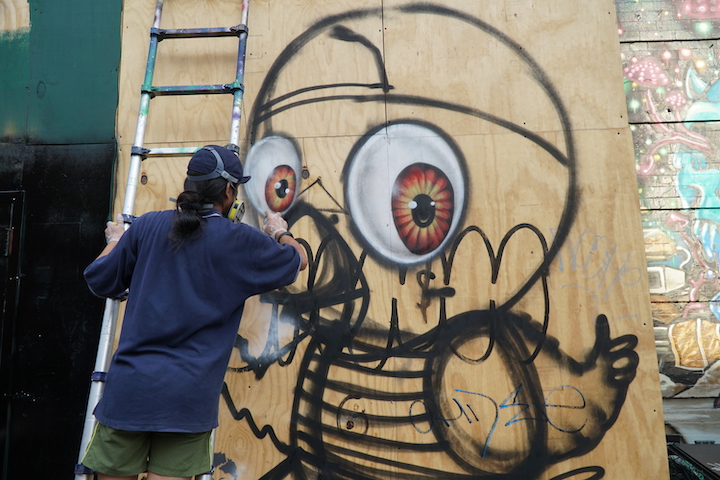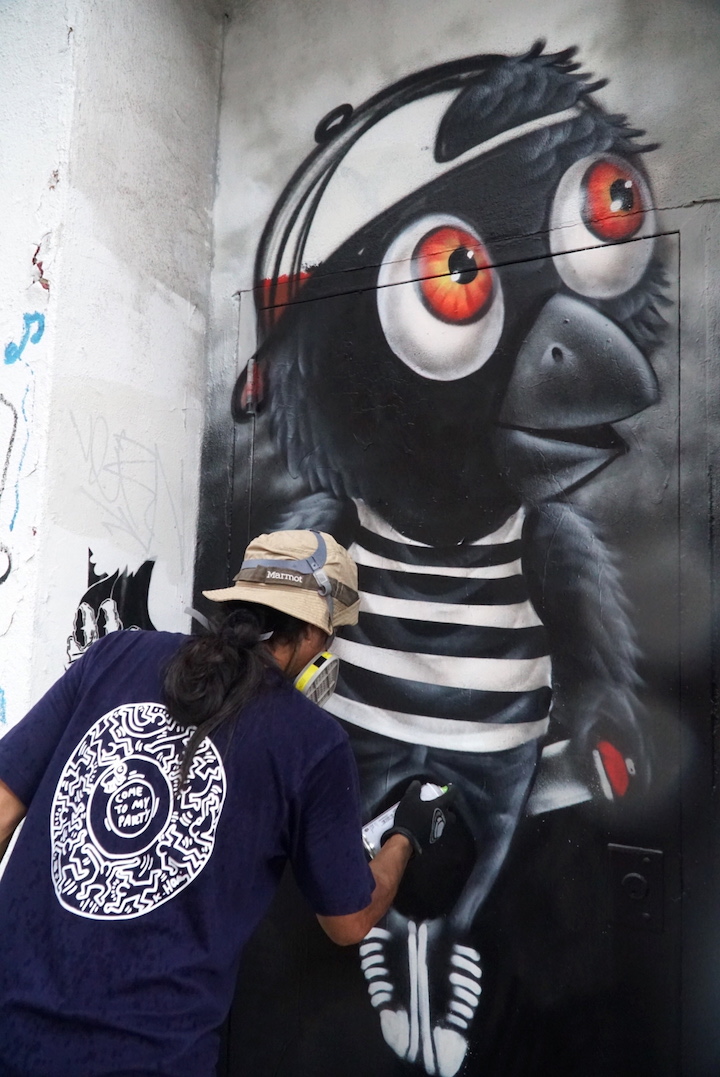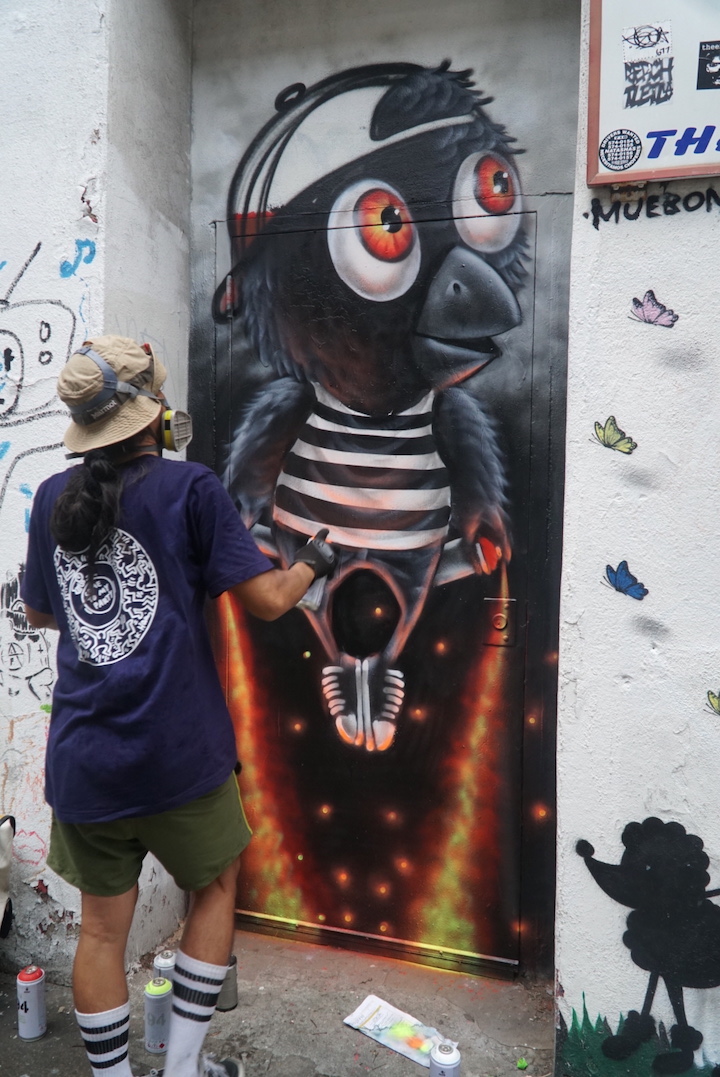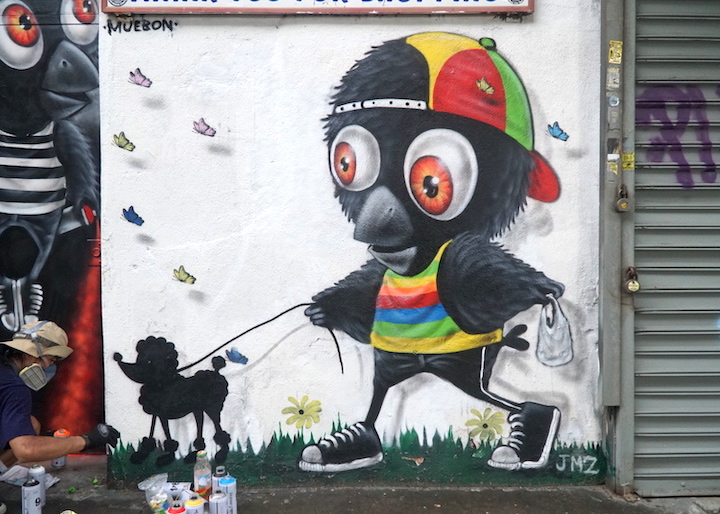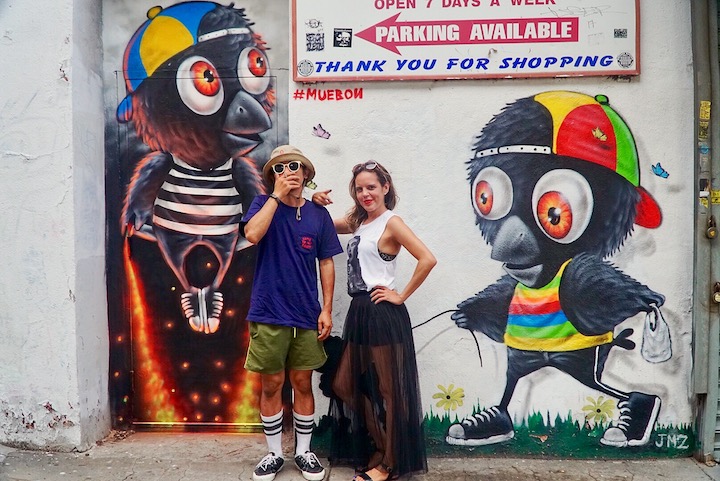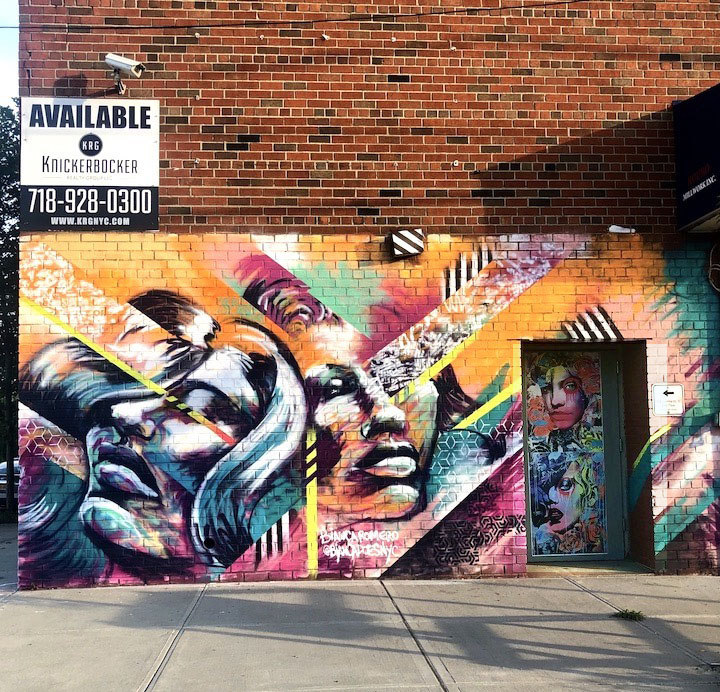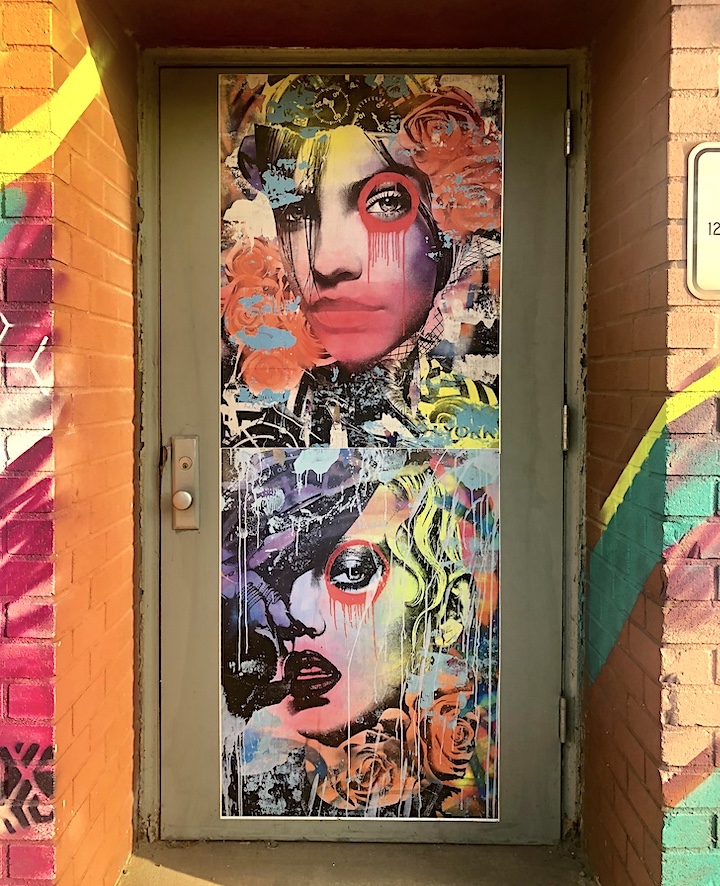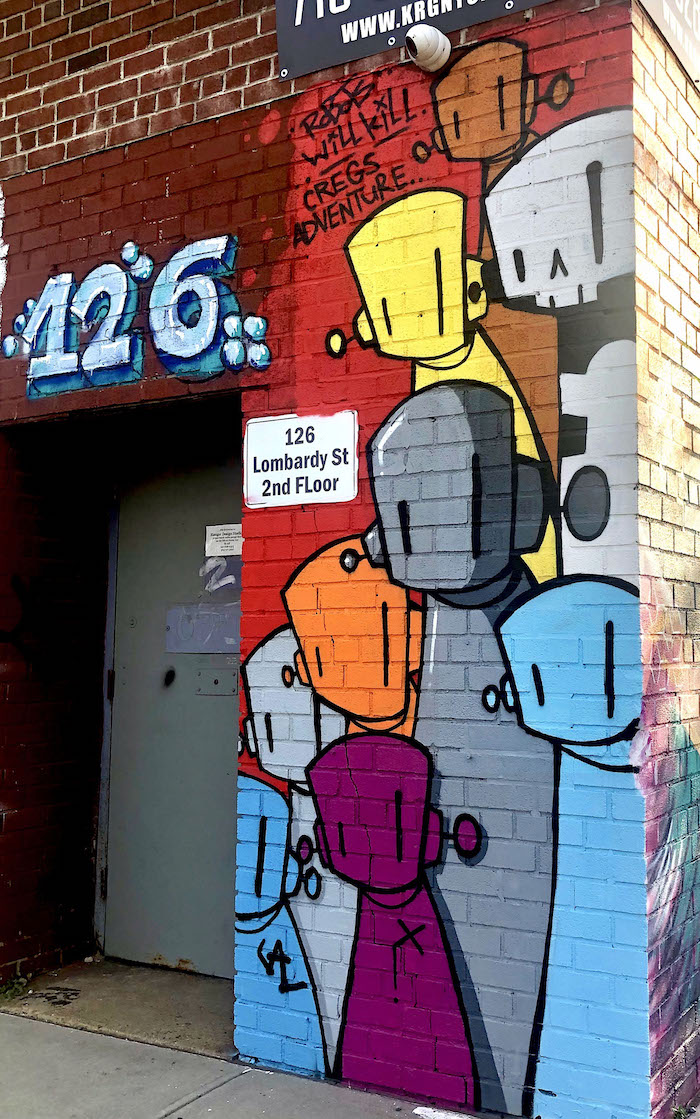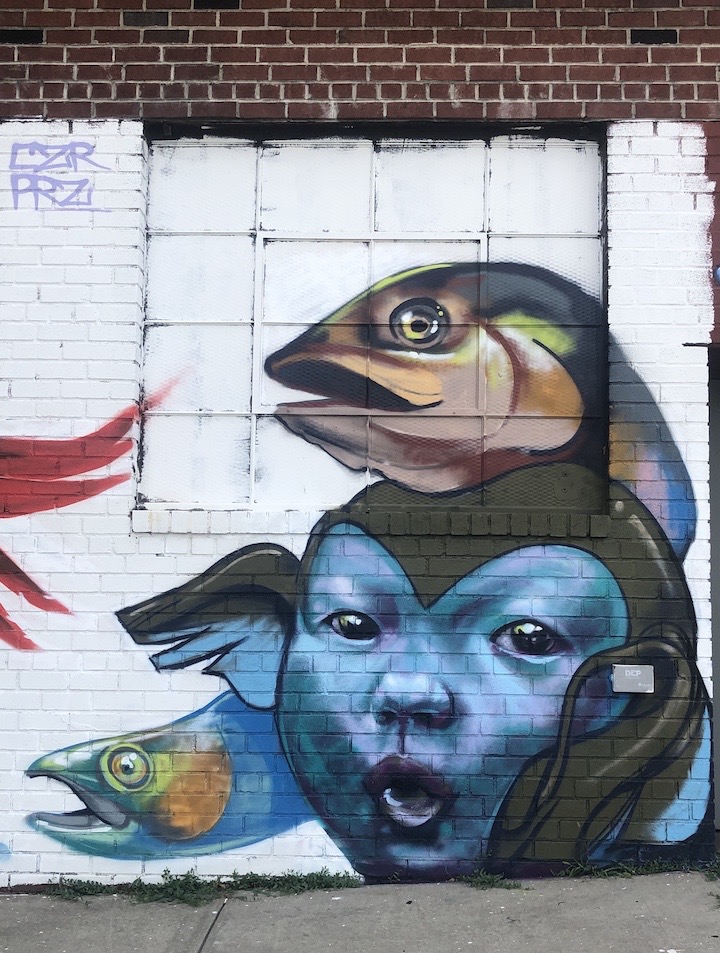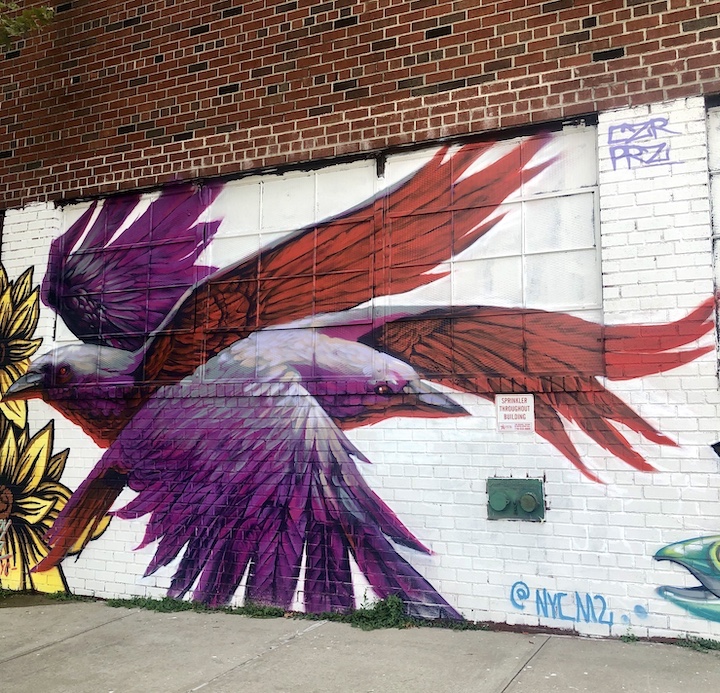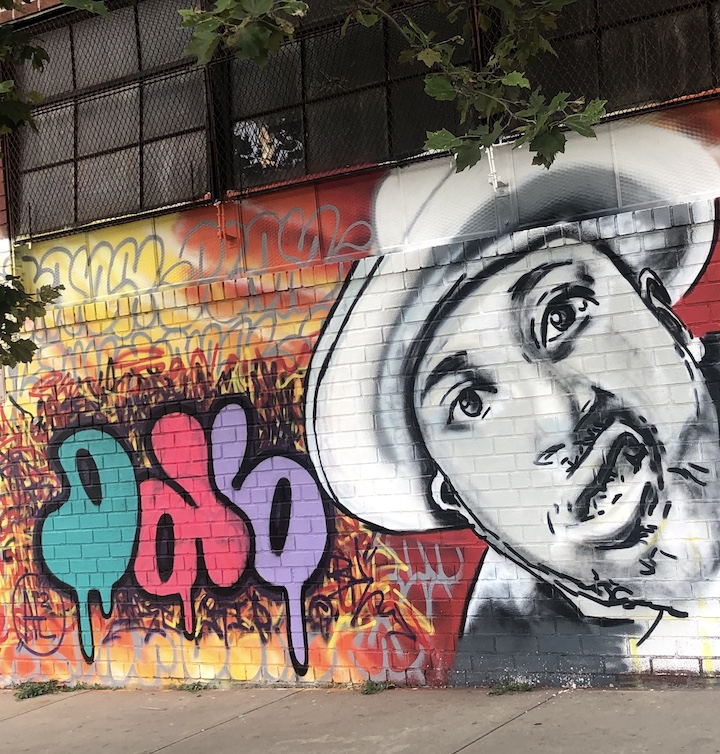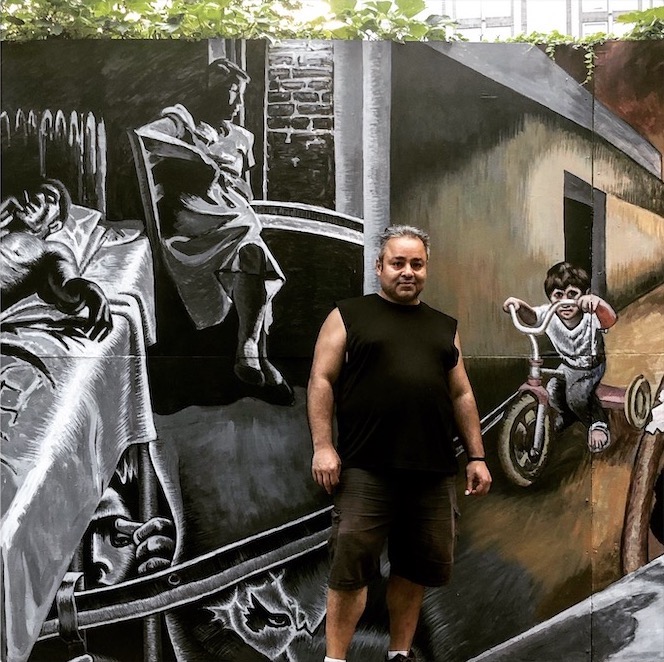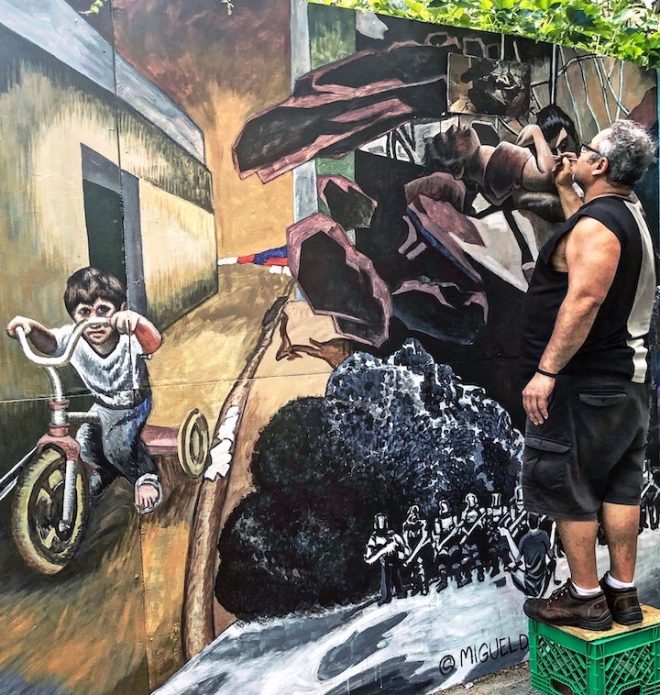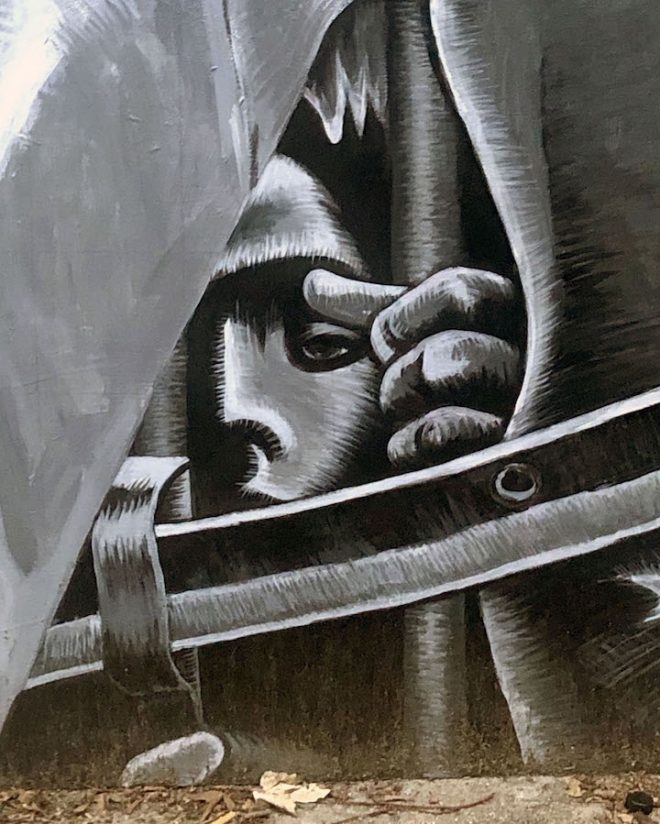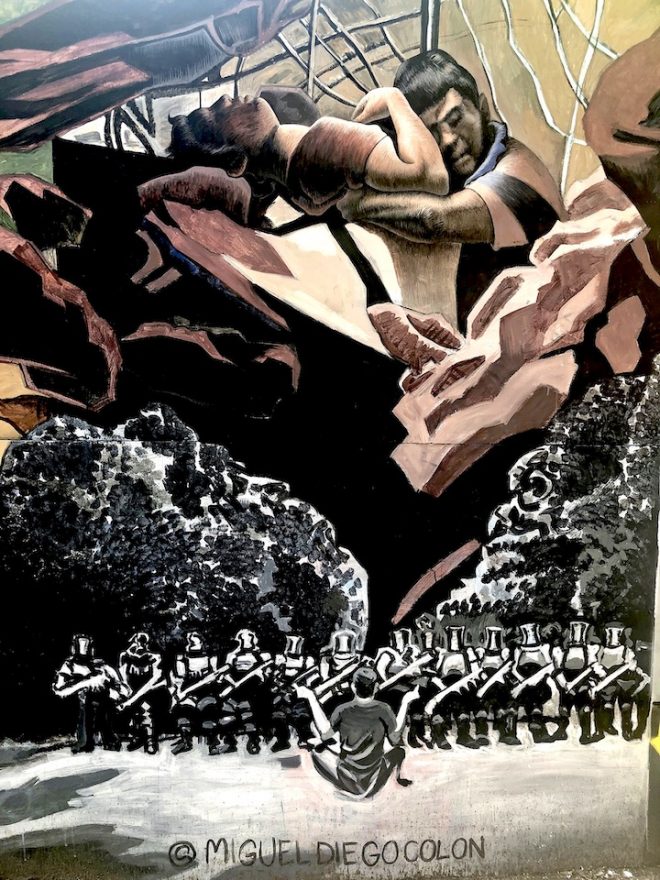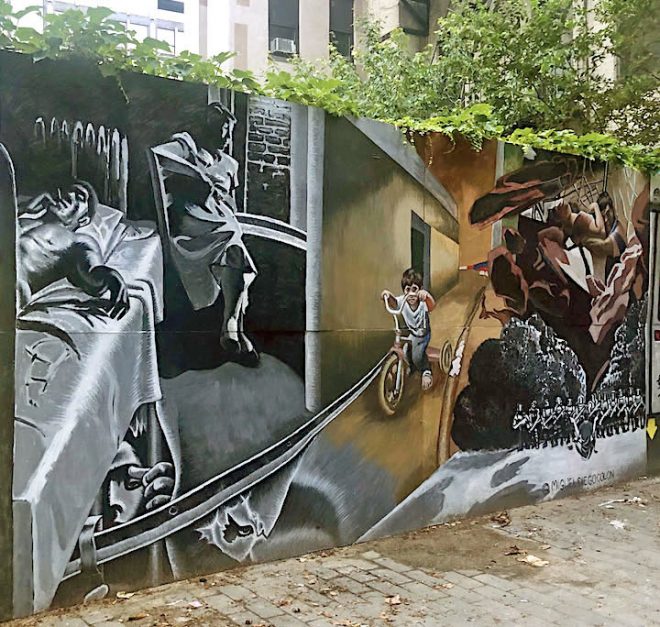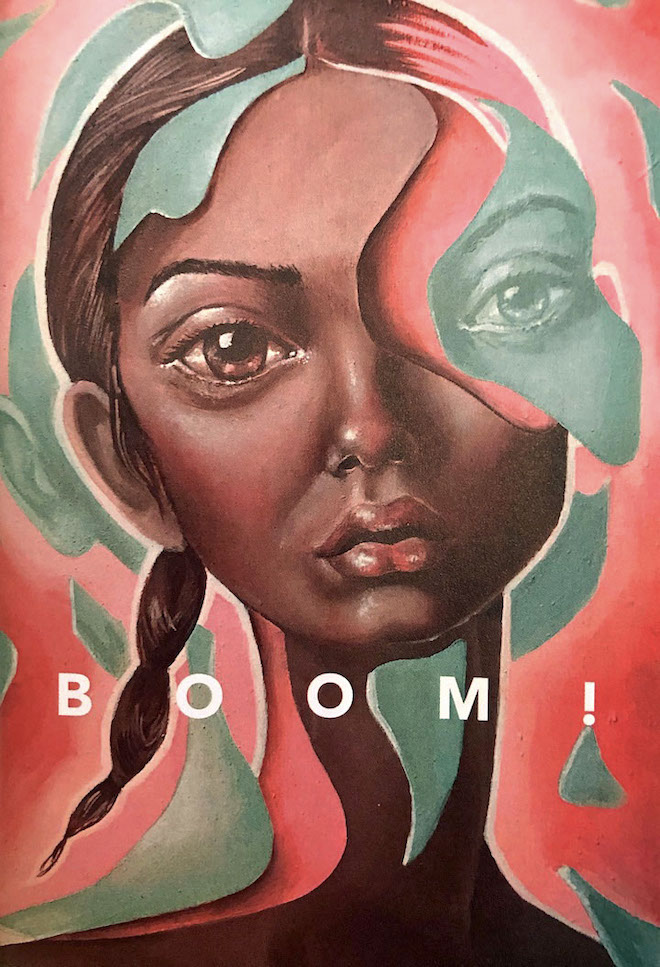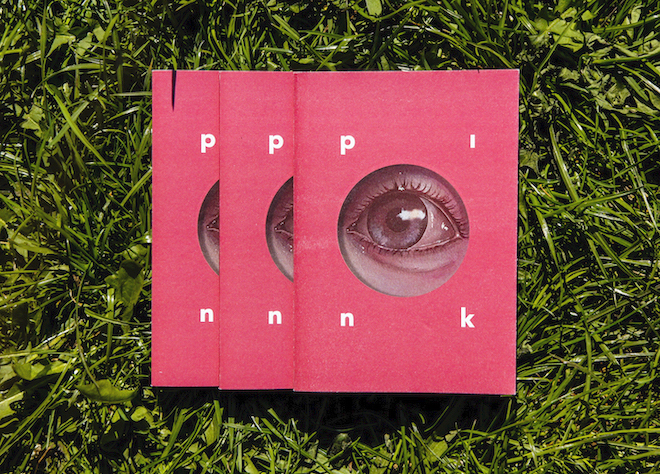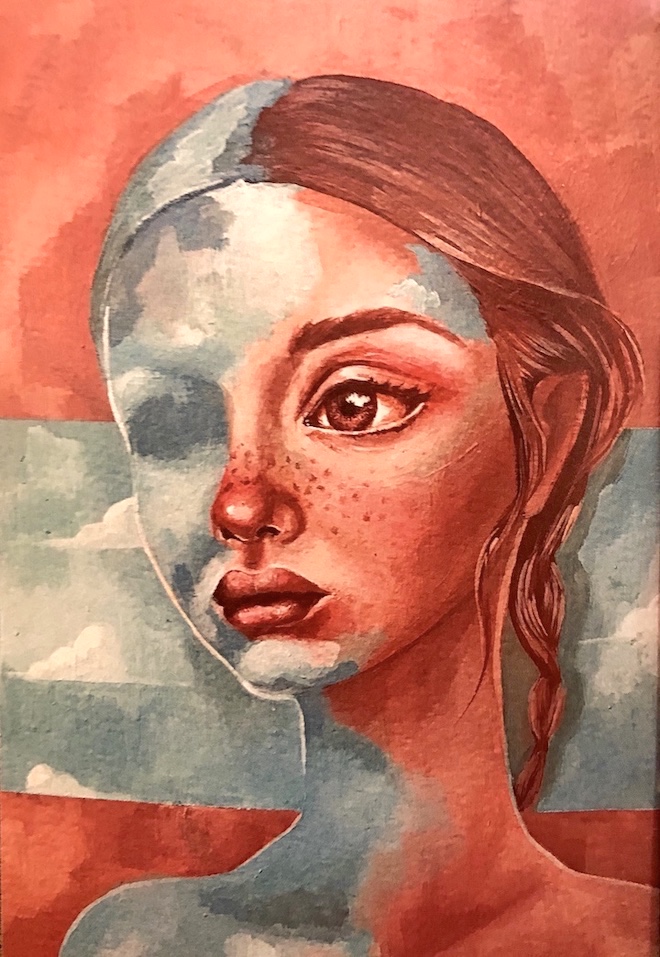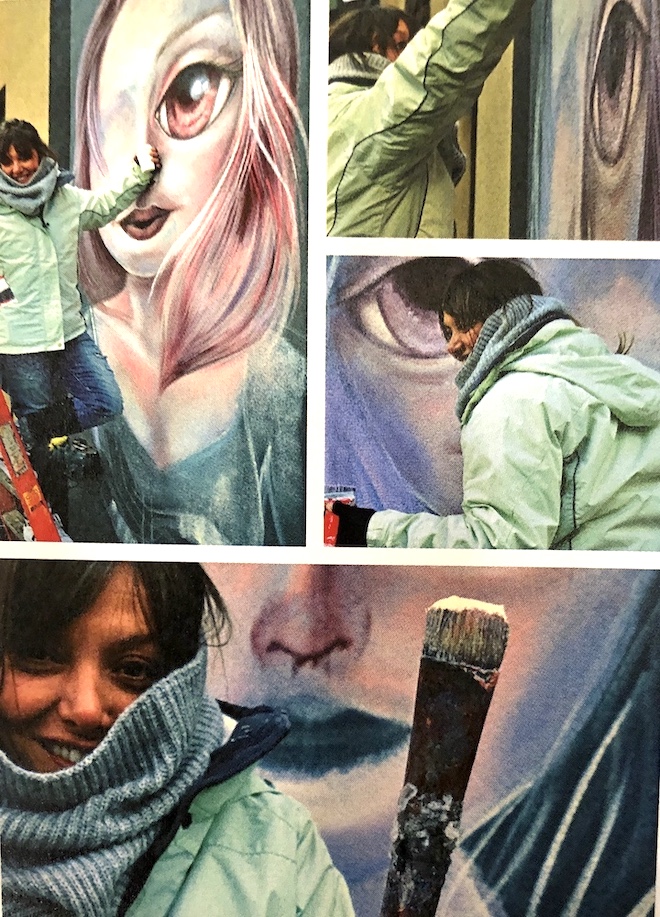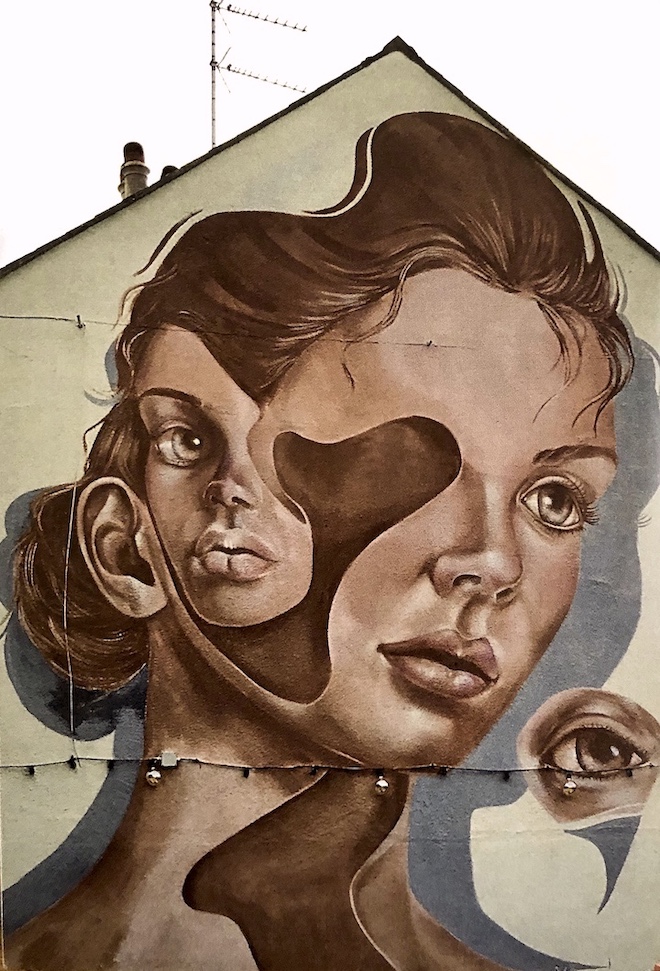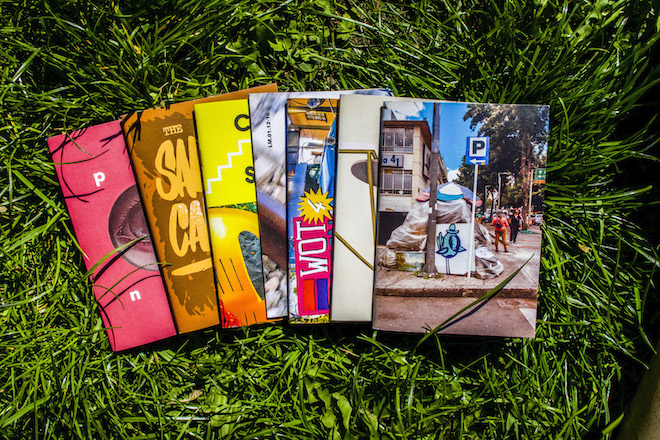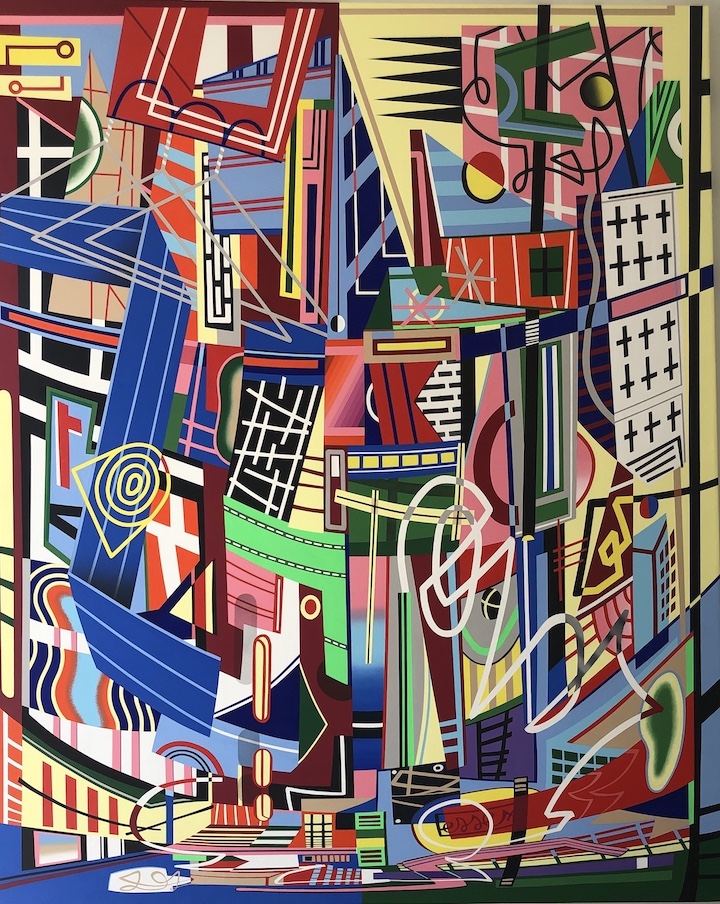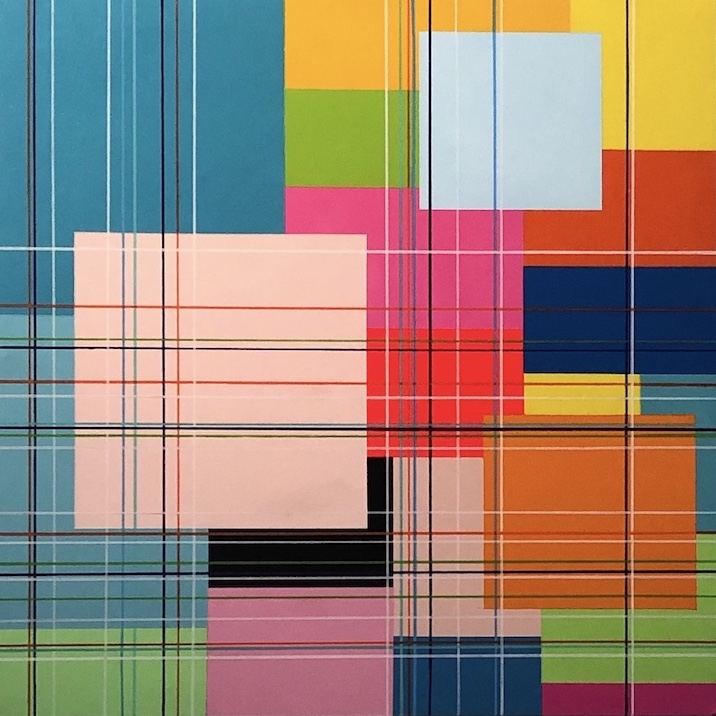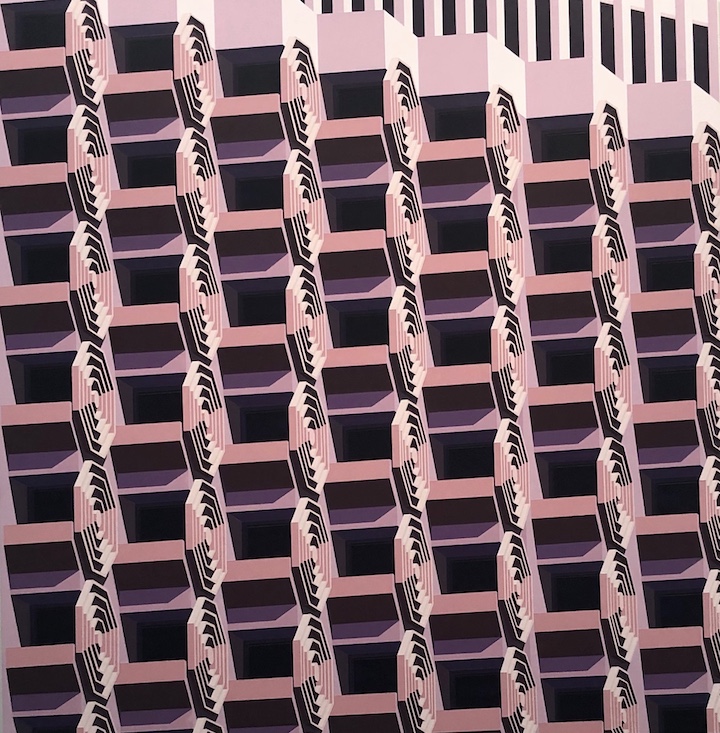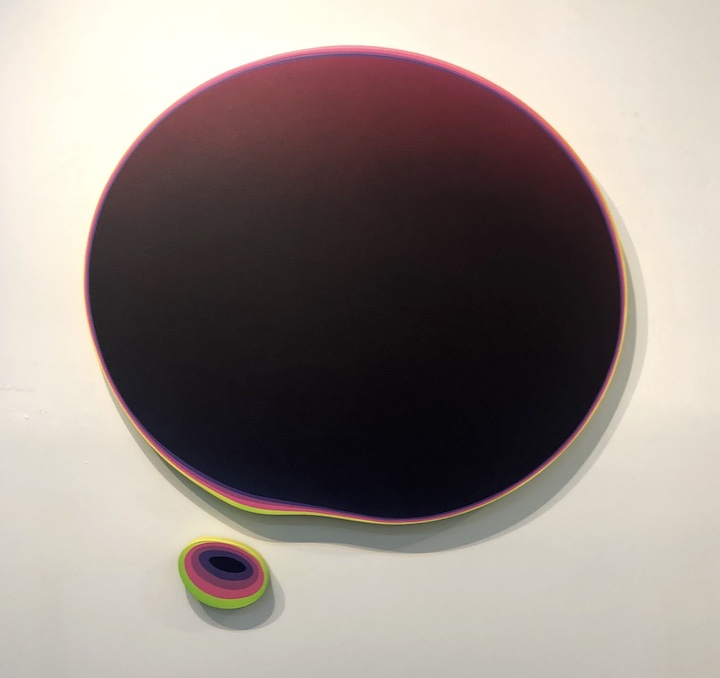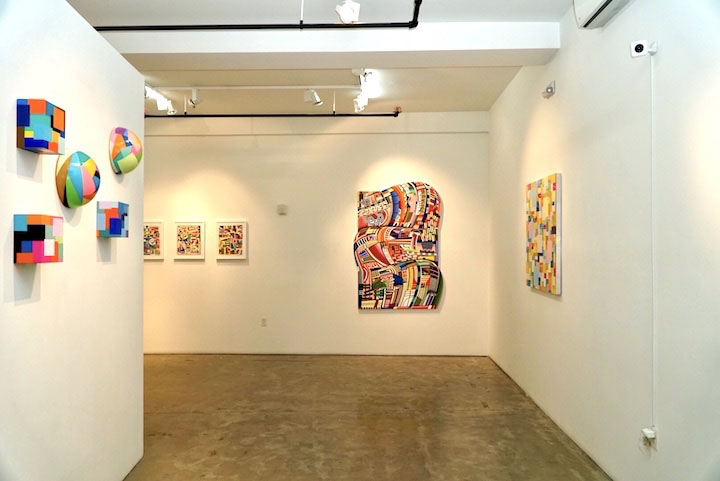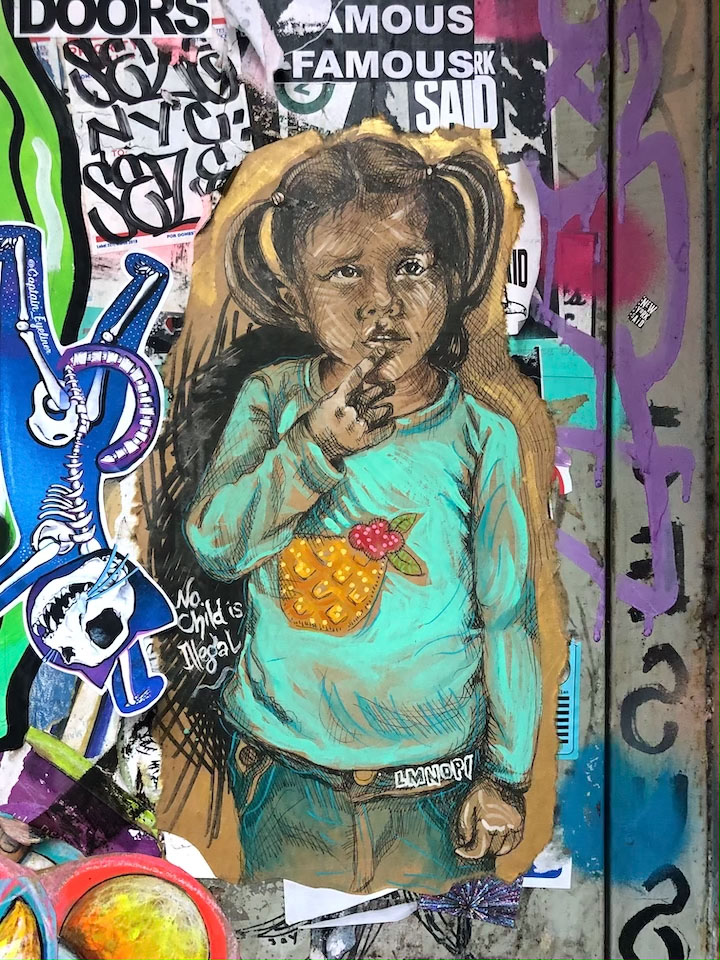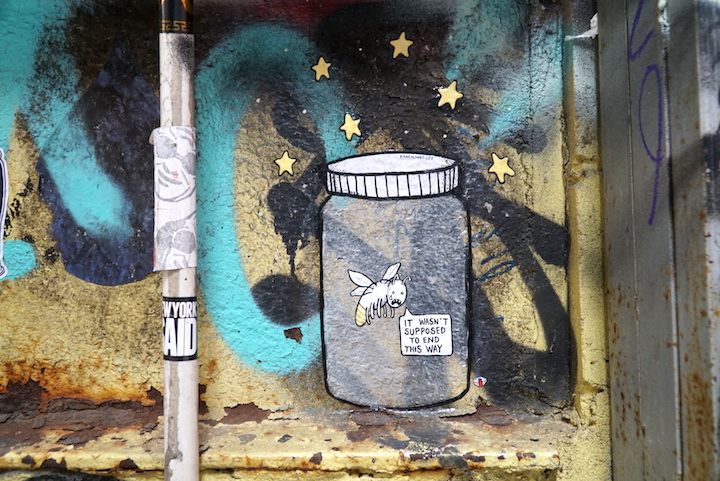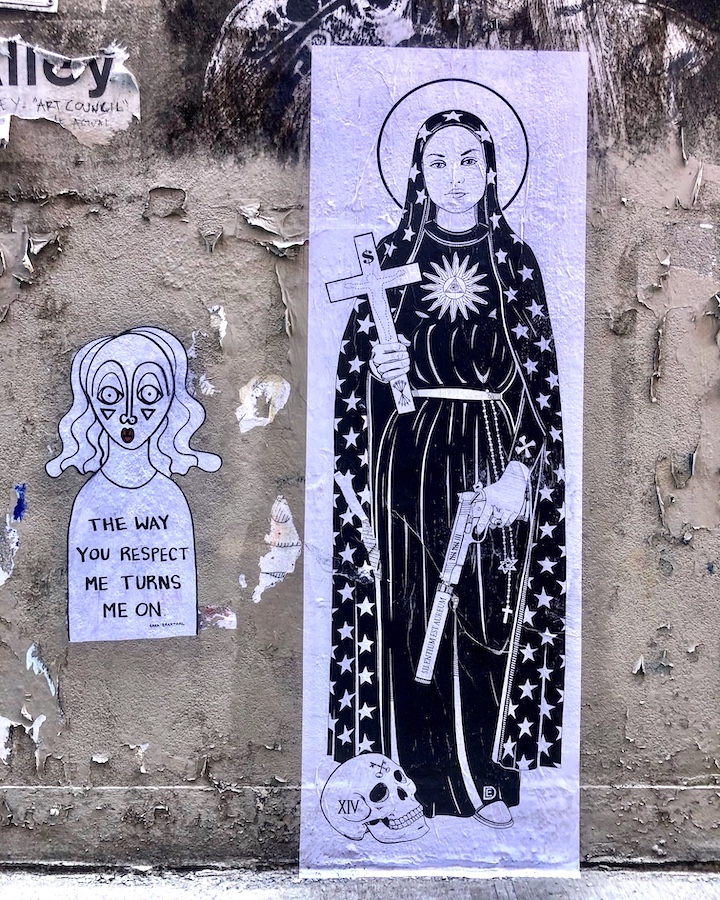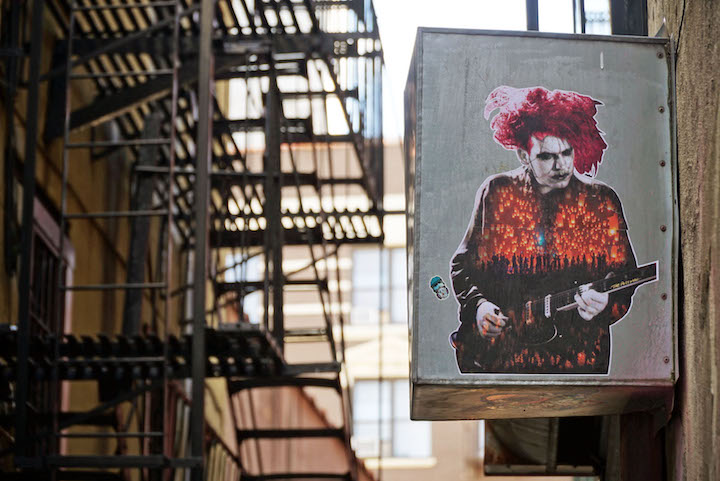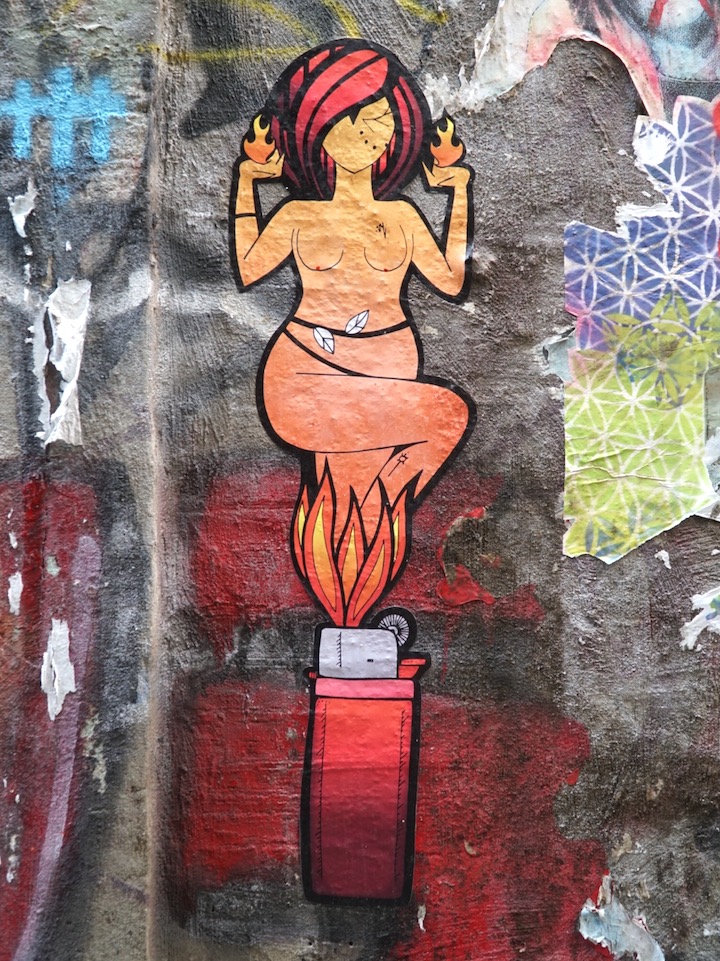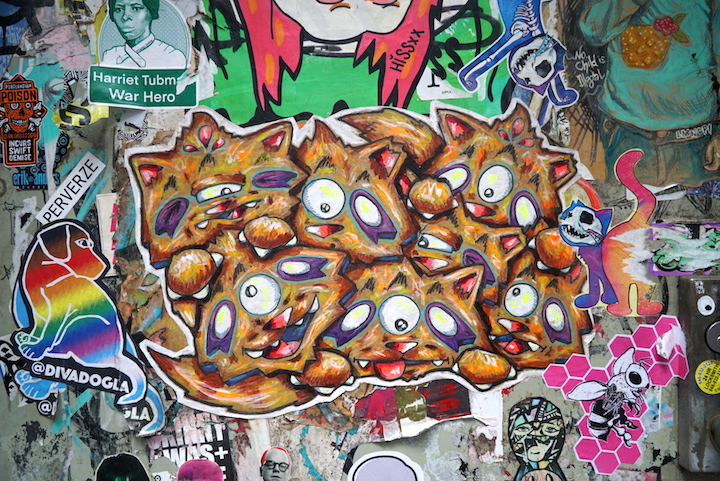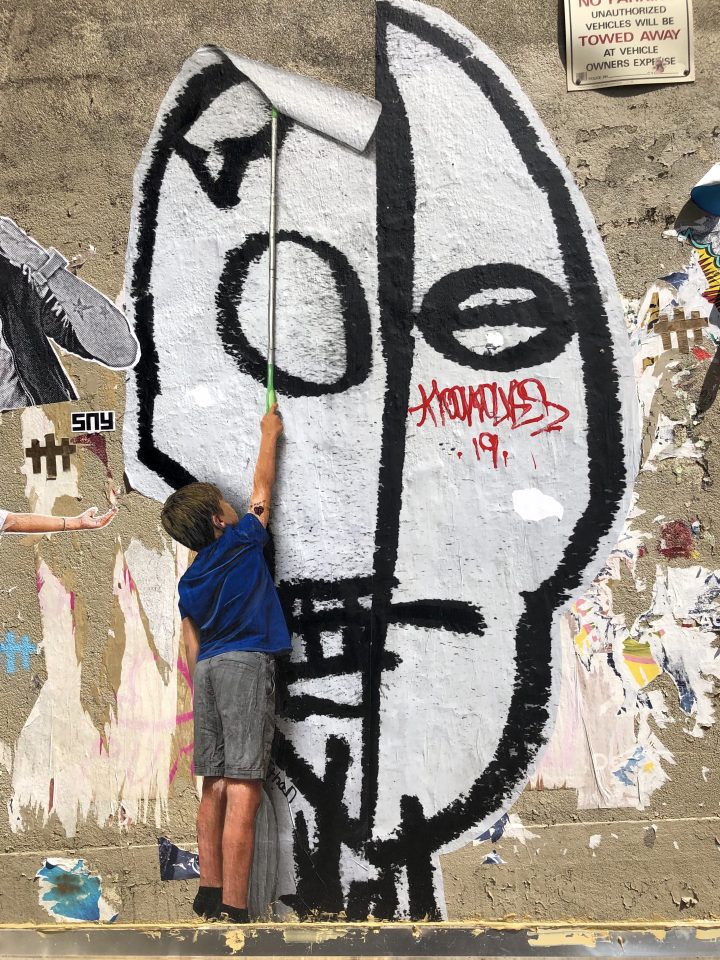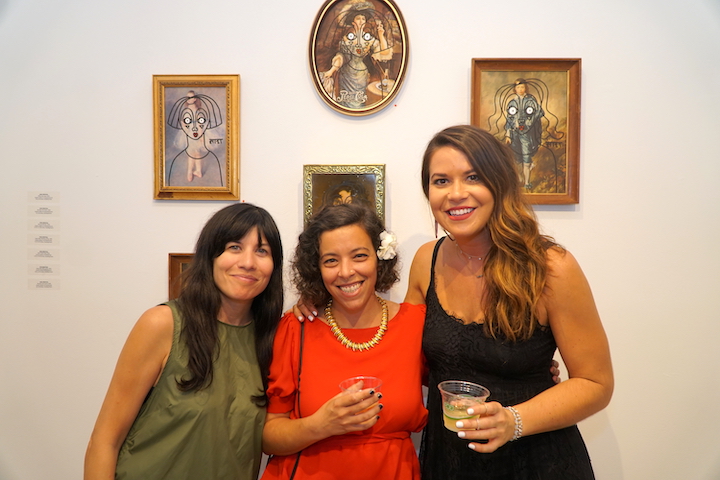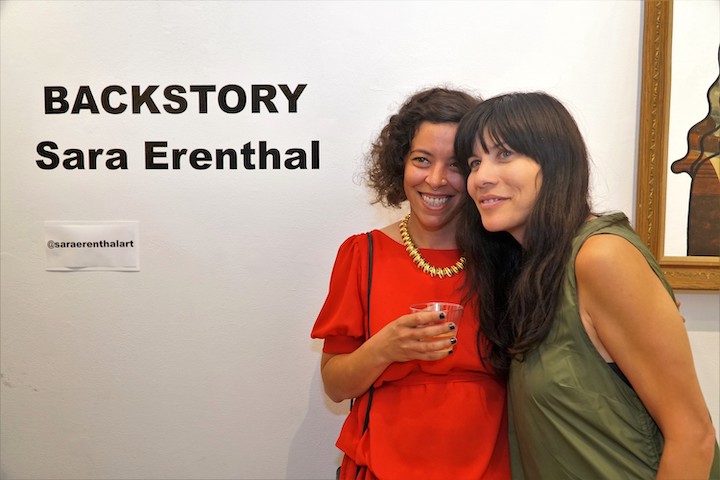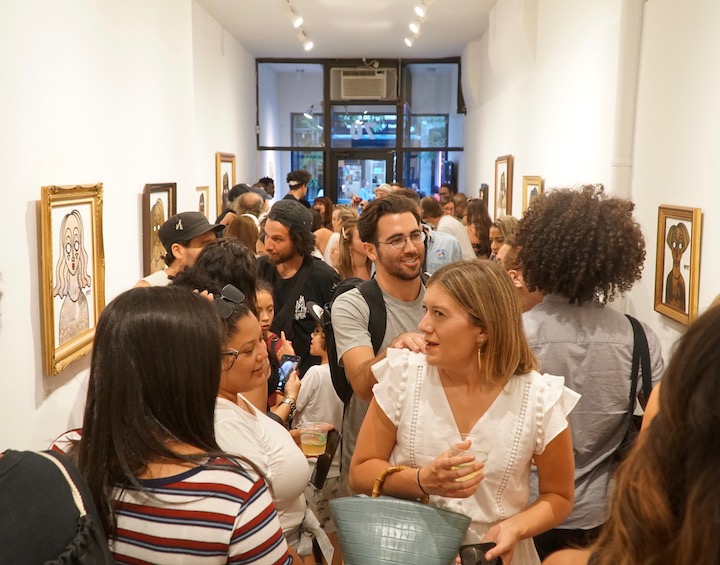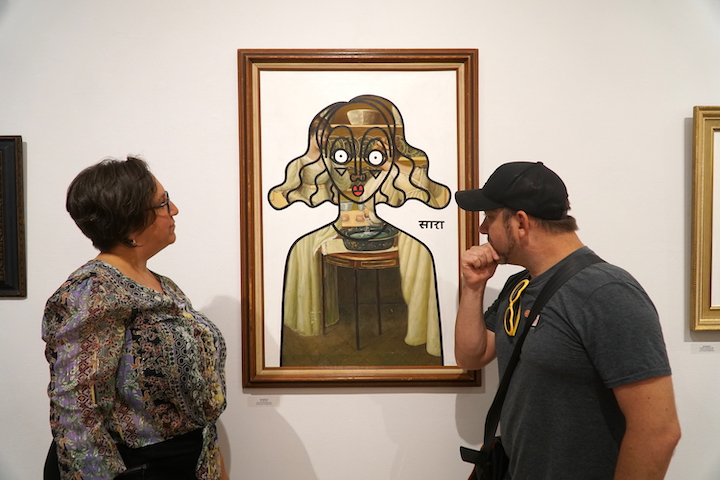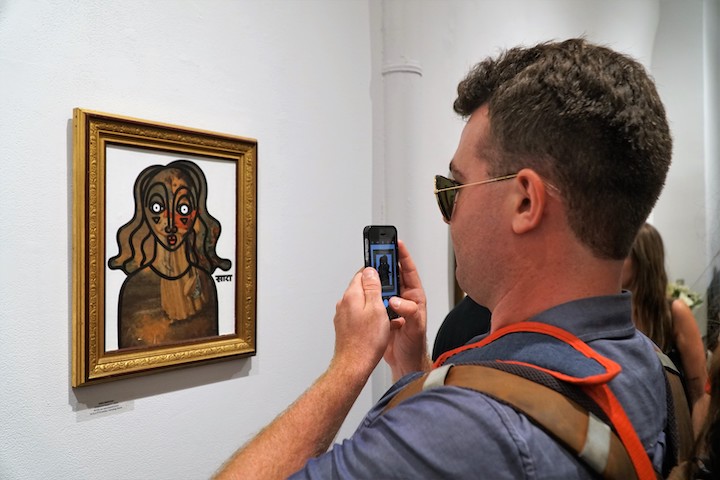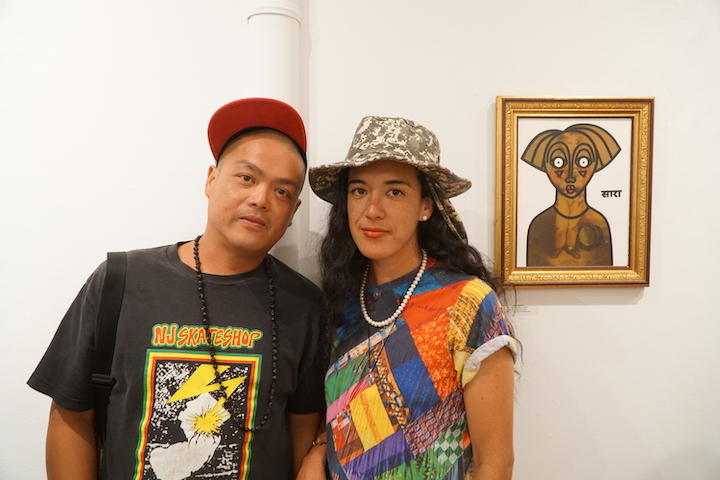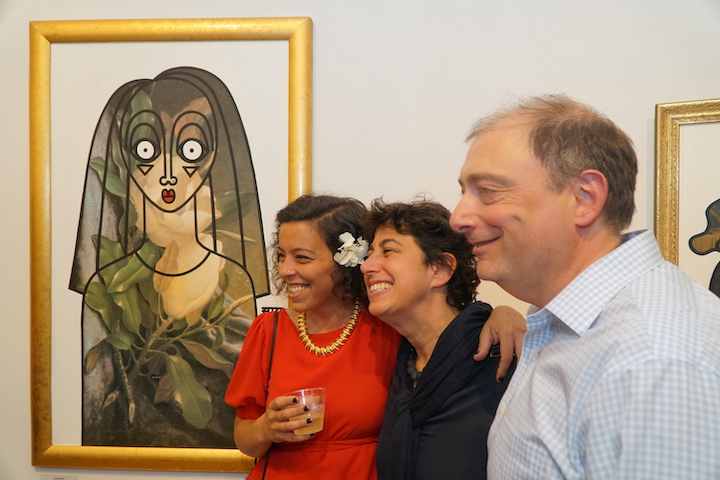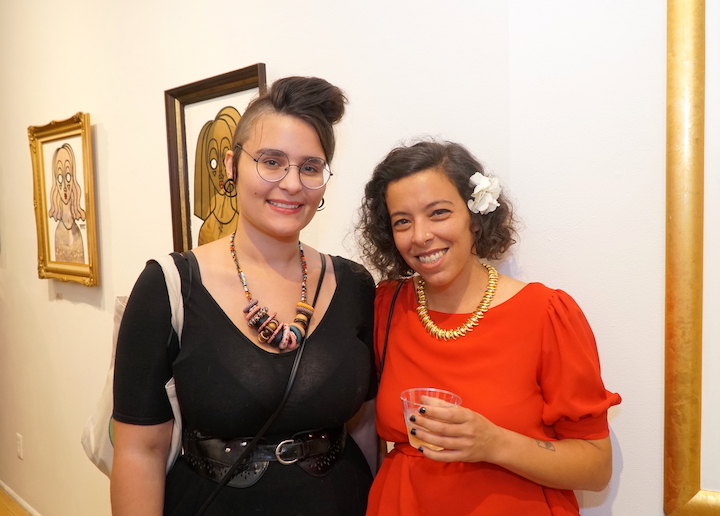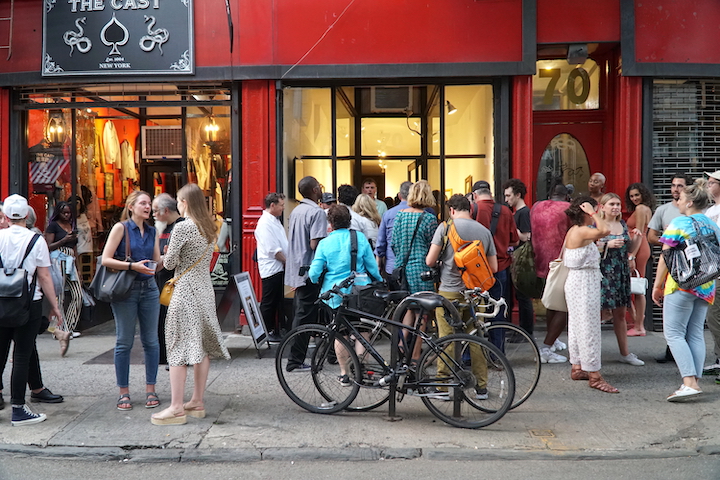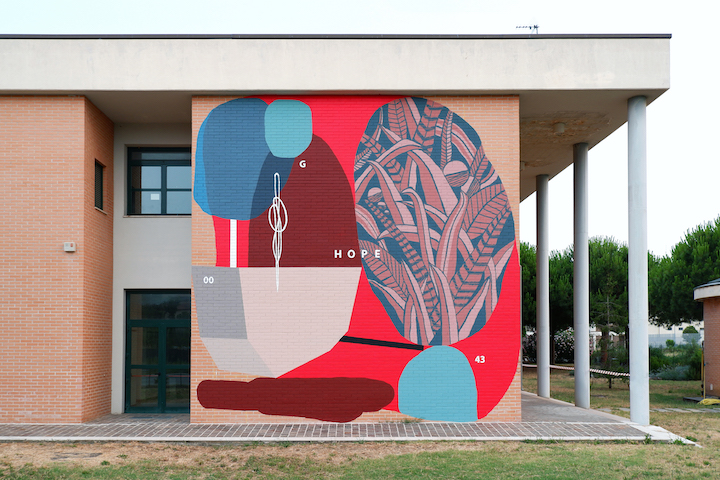
Born and based in the Italian town of Civitanova Marche, the wonderfully talented multidisciplinary artist Giulio Vesprini will be bringing his vision here to NYC this coming week. A brief interview with the artist follows:
You’ve studied art formally at the Academy of Fine Arts in Macerata and at the Department of Architecture in Ascoli Piceno. What spurred you to turn your talents to public spaces?
My two greatest passions are graphics and architecture. And thanks to the outstanding teachers I had in both disciplines, I came up with a way to combine my passions: archigraphia. I view painting in public spaces as a superior expression of art.
When and where did you first paint in a public space?
I started painting when I was fourteen yeas old. It was back in 1994. Using two old spray cans, I painted a big face on an abandoned wall. It seemed really ugly! I didn’t know what I was doing, but it was fun doing it. I felt free, and it was a wonderful feeling! At that moment, I understood that the wall was my only true canvas.
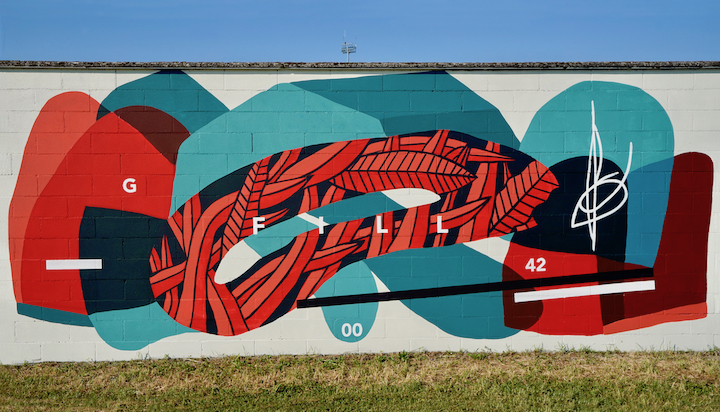
Your work seems to straddle the lines between graphic design, fine art and street art. Can you tell us a bit about your process? Do you work with a sketch in hand or just let it flow?
Each one of my works is planned in terms of the space that will hold it. I always combine graphic language with the language of architecture. I always bring with me a drawing, along with some landscape photos. I feel that every street artist has to consider the site on which he is working — in terms of its distinct story and locale. Urban art should fuse with the specific space and not prevail over it.
Have you collaborated with other artists? Are there any artists out there with whom you’d like to collaborate?
Yes, I have collaborated with many others street artists. Among my most interesting collaborations were those with Aris and 108, two italian street artists. I’d like to paint with MOMO and Rubin415. I very much like their styles, and I think that they have a perfect understandng of architecture.
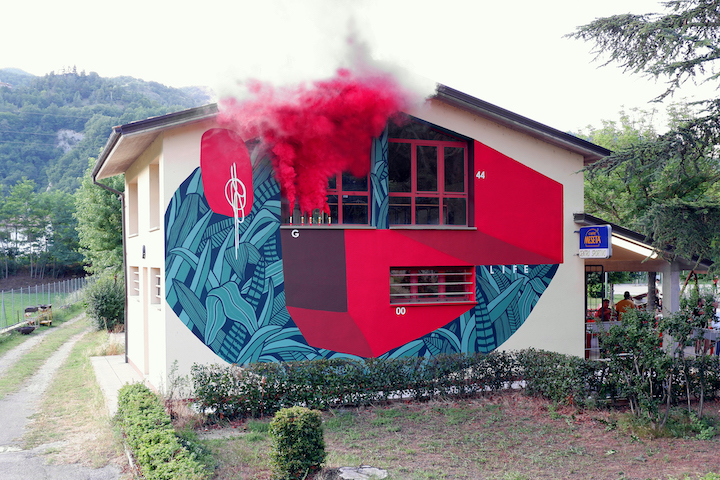
Have you exhibited your work in gallery settings? If so, where?
I’ve exhibited in Milan, Florence and in Bologna. Now I wish to show my art works in galleries in other countries — like Germany and France. I dream of having a show in the United States.
What’s ahead?
I’ll be in NYC from August 5 though August 22. I am excited to be painting at rag & bone on East Houston Street, and I look forward to other opportunities to paint in NYC, as well. In September, I will be in France for an international street art festival and then off to projects in Rome, Turin and others Italian cities.
Photos
1 Mural for school in Civitanova Marche, Italy for project cordinated by Vedo a Colori
2 Final wall for the second edition of the Manufactory Project in Comacchio, Italy
3 Final wall for the Pennelli Ribelli Festival in Bologna, Italy
Interview conducted and edited by Lois Stavsky; photos courtesy of the artist
Note: Hailed in a range of media from WideWalls to the Huffington Post to the New York Times, our Street Art NYC App is now available for Android devices here.

